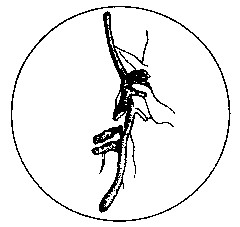3) arbuscular mycorrhizal fungi


丛枝菌根真菌
1.
Effects of arbuscular mycorrhizal fungi colonization on toxicity of soil contaminated by heavy metals to Vicia faba;
重金属污染土壤接种丛枝菌根真菌对蚕豆毒性的影响
2.
Influence of an arbuscular mycorrhizal fungi and two bacterial strains on DEHP degradation and growth of mung bean in soil;
丛枝菌根真菌和两株细菌对土壤中DEHP降解及绿豆生长的影响
3.
Effects of inoculation of arbuscular mycorrhizal fungi onδ~(13)C value and gas exchange parameters of Leymus Chinensis;
丛枝菌根真菌对羊草δ~(13)C组成和气体交换的影响
4) Arbuscular mycorrhizal fungi(AMF)


丛枝菌根真菌
1.
In this paper,effects of arbuscular mycorrhizal fungi(AMF) on plant growth were summarized.
本文综述了丛枝菌根真菌对植物生长影响的概况。
2.
Arbuscular mycorrhizal fungi(AMF)is a kind symbiotic fungi of plants,plays an important role in wetland ecosystem in the aspects of nutrition absorption,growth, anti-salt stress and anti-pollutant,thus,it becomes hotspot of research.
丛枝菌根真菌(Arbuscular mycorrhizal fungi,AMF)是一类与植物互惠共生的微生物。
5) arbuscular mycorrhizal fungus


丛枝菌根真菌
1.
) plants with or without arbuscular mycorrhizal fungus(AMF,Glomus caledonium) inoculation supplied with Zn at 0,300 and 600 mg/kg soil.
通过3个不同施锌水平土壤的盆栽玉米试验,分析了丛枝菌根真菌Glomus caledonium在土壤发生锌污染时,对玉米苗期矿质营养的影响。
2.
【Method】The red clover(Trifolium pratense) was seeded in the pot with the soil single inoculated with arbuscular mycorrhizal fungus(Glomus mosseae strain),single inoculated with four different phosphate(P)-solubilizing bacteria(numbered B1,B2,B3 and B4,separterly) or inoculation with both the phosphate(P)-solubilizing bacteria and arbuscular mycorrhizal fungus.
【目的】研究解磷细菌和丛枝菌根真菌同时接种,对低磷土壤养分利用的影响。
6) AMF


丛枝菌根真菌
1.
Effect of AMF on GSH-Px activity and cell membrane osmasis of tomato;


盐胁迫下丛枝菌根真菌对番茄细胞膜透性及谷光甘肽过氧化物酶活性的影响
2.
Effects of Different AMF Strains Inoculation on Tomato Growth and Nutrient Absorption during Seedling Stage;
丛枝菌根真菌对番茄苗期生长及矿质营养吸收的作用
3.
EFFECTS OF AMF ON THE GROWTH OF WHEAT AND SOYBEAN;


两种丛枝菌根真菌对小麦和大豆生长的影响
补充资料:菌根
| 菌根 mycorrhiza 土壤中某些真菌与植物根的共生体。凡能引起植物形成菌根的真菌称为菌根真菌,大部分属担子菌亚门,小部分属子囊菌亚门。菌根真菌的寄主有木本和草本植物约2000种。菌根真菌与植物之间建立相互有利、互为条件的生理整体,并各有形态特征,这是真核生物之间实现共生关系的典型代表。菌根的作用主要是扩大根系吸收面,增加对原根毛吸收范围外的元素(特别是磷)的吸收能力。菌根真菌菌丝体既向根周土壤扩展,又与寄主植物组织相通,一方面从寄主植物中吸收糖类等有机物质作为自己的营养,另一方面又从土壤中吸收养分、水分供给植物。某些菌根具有合成生物活性物质的能力(如合成维生素、赤霉素、细胞分裂素、植物生长激素、酶类以及抗生素等),不仅能促进植物良好生长,而且能提高植物的抗病能力。某些菌根真菌的生活史中所形成的子实体,能为人类提供食用和药用的菌类资源(如乳菇属、红菇属)。
|
说明:补充资料仅用于学习参考,请勿用于其它任何用途。
参考词条
